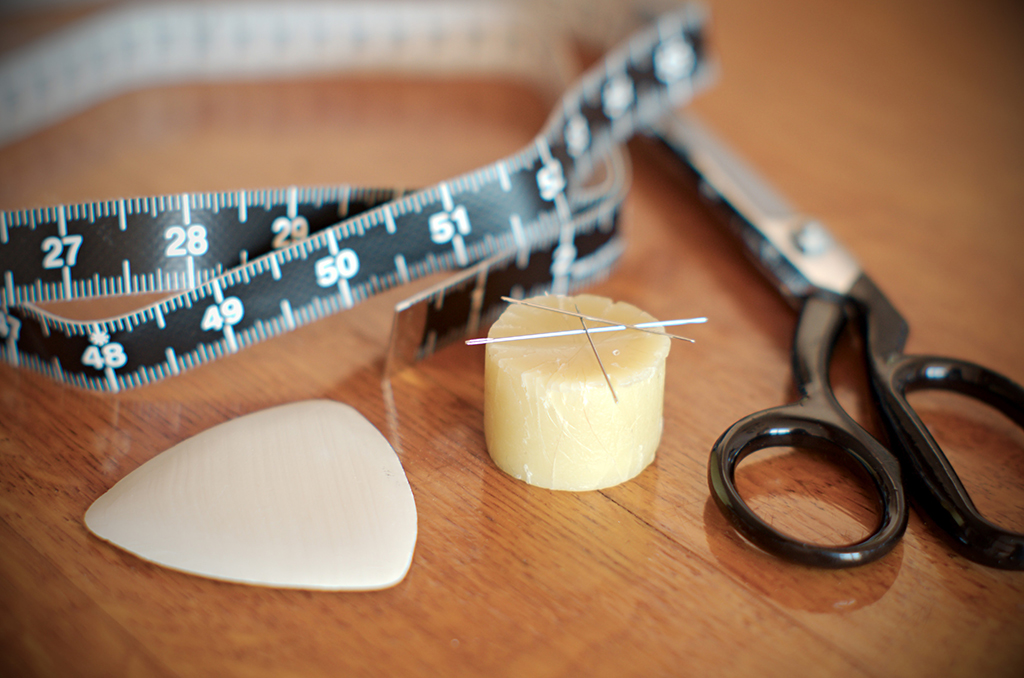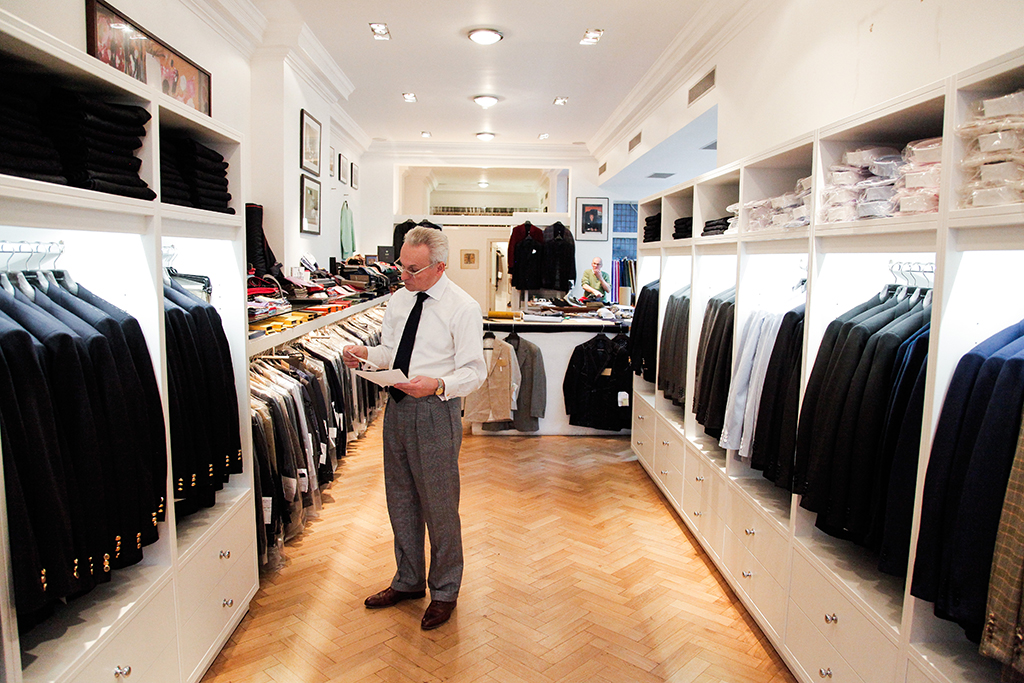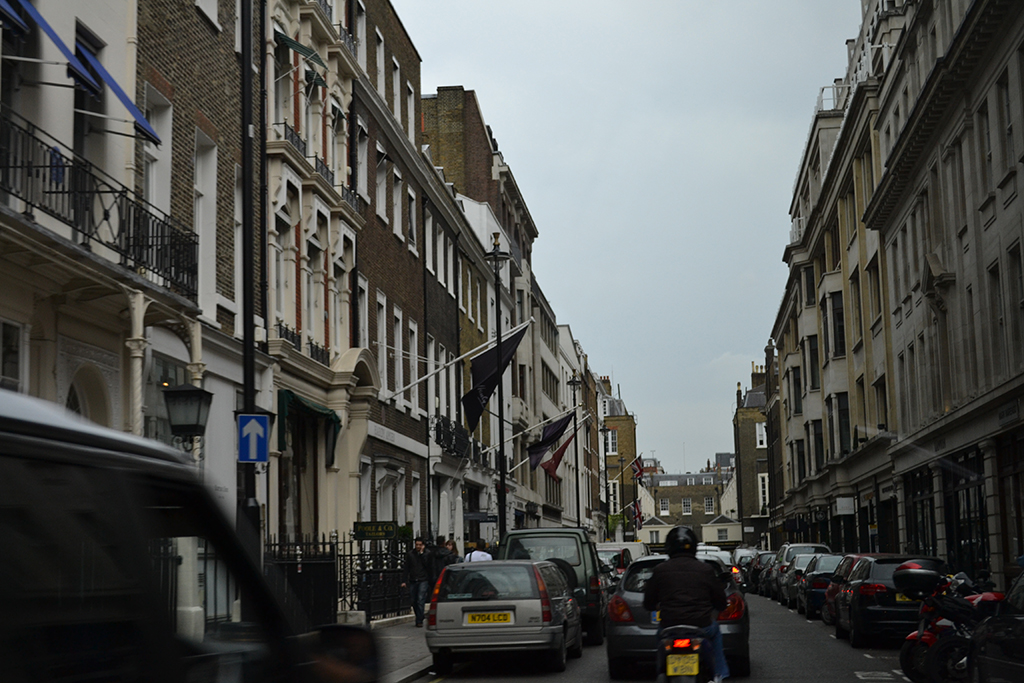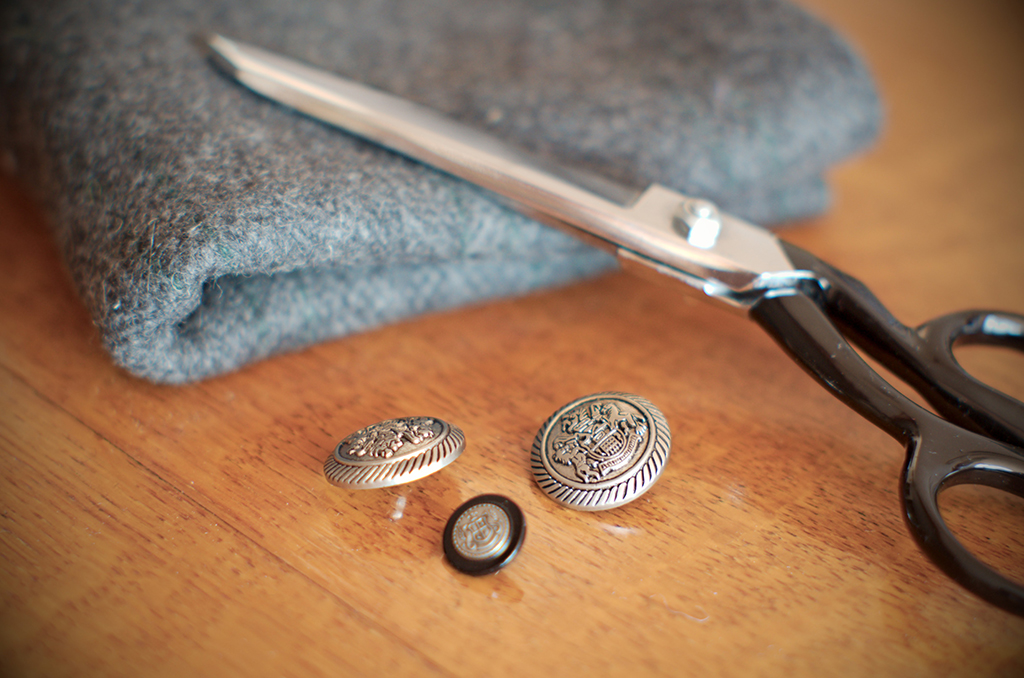
As a sewist whose focus is largely menswear, I often find myself ogling photographs of beautifully crisp peacoats on Pinterest or giving the side eye to a particularly rumpled and sad looking pair of trousers at the grocery store. Like most people who are interested in menswear, I am very appreciative of a well-fitting and carefully sewn piece of clothing, and I also strive to produce such well-tailored and classic pieces on my own sewing machine. While it may not be the norm to dress in tailored garments, we as sewists have no need to distance ourselves from tailoring. We have chosen to devote the time and effort to create a custom garment—why not slow down, approach sewing carefully, and strive to create a garment that perfectly suits the wearer and will last a lifetime?
The Importance of a Tailored Suit
Modern tailoring is most commonly associated with menswear and, more specifically, with formal suits. The development of modern menswear codes of dress began during the turmoil of the mid-eighteenth century. With the American Revolution beginning in 1765 and the French Revolution starting in 1789, old political systems were collapsing, as were their associated culture. Decadent court dress, in the form of endless lengths of silk and velvet, fell from fashion, and an admiration for finery was replaced by respect for simplicity and all things considered rustic. In England and in much of Europe, British sporting clothing (chiefly equestrian costumes) perfectly embodied these new ideals, since they were practically cut and were comprised of materials spun close to home.
While menswear styles have hesitantly edged toward ornate for a decade here and a year or two there, extravagance of the cut and range of design has never again reached the levels that menswear once inhabited within the realm of the wealthy and elite. After the American and French Revolutions, European menswear styles became rigidly constrained to certain codes of dress for gentlemen. The previously static hierarchy and shape of society was in mayhem and, fashion, as so oft is the case, was an excellent way to display where one fit into the new modern society. Particularly in Britain, it was the opinion of many (an opinion that was publicly stated often in newspapers and books on conduct, and by leading social figures) that to be a gentleman, one must dress the part. To dress the part meant to don the correct shape of tailored suit made from the correct materials at the correct time of day. Whether he wore an ornate military uniform or the newly developed velvet smoking jacket, a man was reliant on his tailor to accurately portray his desired position within society. While male dress codes are no longer as rigid as they once were in the past, a high-quality tailored suit still remains a symbol of status and sophistication to this day.
What is bespoke?
The term “bespoke” simply means that a garment has been exclusively created for an individual. The pattern is drafted to the intended wearer’s measurements, the material is chosen by the wearer, and the piece is fitted to the wearer several times throughout the tailoring process. This process creates a garment that can successfully work with or hide various aspects of the wearer’s physique to create a shape that is in harmony with the ideal of the time, the tailoring company’s aesthetic, and the wearer’s preference. The actual word “bespoke” stems from the practice of entering into a tailor’s showroom and choosing or “speaking for” a piece of cloth. The cloth was reserved for the wearer’s future garment, and the measuring, drafting, and fitting process was begun.

The Richard Anderson showroom. Photo by Joseph Kent.
The cutter is the individual who will take your measurements and will actually draft your pattern. They are usually the cores of the tailoring business and they are highly skilled. Often, a cutter will have completed many years as a tailor before advancing to become a cutter. If a customer has found a cutter who drafts the perfect suit for their frame, it is quite common for this customer to switch tailoring companies if their cutter moves to a different establishment.
The third main position within a tailoring business is, of course, the tailor. You will likely never meet the tailor working on your suit but will instead be communicating with the salesperson and the cutter. Depending on the size of a business, one tailor might complete your entire suit or there may be several tailors working on it. The tailor will stitch the entire suit by hand, including basting and buttonholes.
Thomas Mahon, writes the original bespoke tailoring blog, called “English Cut” and was personal cutter for the Prince of Wales. He has written a number of articles detailing what you might expect if you were to order a tailored suit on Savile Row, a street in London, England renowned for its concentration of skilled tailors. This is what will likely occur:
First, Mr. Mahon prefers that a tailoring company or specific cutter is personally recommended to you as opposed to trying to sift through the many quality options on the Row solely through their advertisements and street presence (though this is still very possible, he just urges you to do your homework diligently!). Upon selecting your tailoring business you will head to the showroom to meet with the salesperson and cutter. Mr. Mahon cannot emphasize enough that you should be very clear and detailed in describing what style and purpose you have in mind for a suit. After all, you have chosen to order a tailored (i.e., highly personalized) suit made for you—this is the time to establish personal connections with your salesperson and cutter, so as to ensure a very personalized suit. During this meeting you will likely pick or “speak for” the suit material, discuss all suit design details, and have your measurements taken (usually more than twenty measurements depending on the drafting method used). After this meeting, you can expect your suit to be finished within four to eight weeks (as per Mr. Mahon’s timeframe, though traditionally the bespoke process takes twelve weeks or more).
Before your suit is finished, there will be two to three fitting sessions. The first fitting is called the “skeleton baste” and is not always necessary if you are a returning customer. Two weeks after taking your measurements, the tailor will have assembled the basic garment using basting thread and minimal interior finishing. This fitting with the cutter is to check for any major fit issues or errors with the pattern.
You will be called in for another fitting (called the “forward”) once the suit is almost fully constructed. The sleeves and collar will still be basted to allow for more detailed fitting of these areas but the rest of the suit, including pockets and other design details, will be finished.
Lastly, you may be called in for a third fitting or simply to pick up your finished suit (unless it is being delivered to you). This third fitting is called “finish bar finish” or “fin bar fin.” At this point, the suit is complete aside from buttonholes and hand felling the lining to the shell.
Once you receive your finished suit, your relationship with the tailoring company is not over. The cutter’s aim is to have the suit sit perfectly on your body for many years of wear. It is often the custom to return to the tailor after a few months, at which point the cutter can ensure that the fabric is settling correctly, the tailors can make any small adjustments, and you can leave entirely satisfied with your bespoke suit.
Savile Row

Savile Row is a street in Mayfair, London. Known for its traditional bespoke tailoring for men.
Photo by Loren Javier.
The buildings lining this street were originally part of the estate of the 1st Earl of Burlington in the early 1700s. He enthusiastically began the construction of Burlington House but was forced to sell off a portion of his land to combat pending bankruptcy. The new owners of this land, including James Douglas, the double Duke of Queensbury and Dover, developed this orchard into a very fashionable district of palaces and other stately buildings. One of these newly developed streets was Savile Row, which was named after the Earl of Burlington’s wife, Lady Dorothy Savile. The network of new streets were highly desirable choices for any businessmen wishing to sell to or serve the fashionable and influential of the time. Savile Row itself was predominantly filled with surgeons and doctors for the better part of a century. During this period, the streets surrounding Savile Row held the businesses of many highly respected tailors, due to the close proximity to their clients.
By 1848, surgeons were shifting their businesses to the nearby Harley Street. Simultaneously, tailors moved into Savile Row to fill in the gaps. Savile Row made the switch from being known as a medical district to its current status as the district of tailors when Henry Poole moved onto the Row. Henry Poole was the new owner of his father’s tailoring business and had been responsible for the business’ publicity and reputation until he assumed ownership. He was hugely successful in establishing a devoted following by mingling with the wealthy sporting men or “dandies,” who were the very fashionable crowd at the time. These men were devoted to fashion and to Poole. When Poole moved onto Savile Row, the street, in the public eye, firmly became the street of menswear.
The concentration of tailors on Savile Row and the prevalence of tailors all over London was by no means the beginning of tailoring itself, but it was an indication of how tailoring had changed position in British culture. Tailors were no longer employed only by the very powerful and wealthy. It was now essential for any aspiring English gentlemen to obtain the services of a tailor in some regard. While many men could only afford to have a hand-me-down suit taken in, they would still commonly devote a large portion of their wages to having this done. A well-fitting suit functioned somewhat as a uniform; it was a way for the rest of society to detect any number of traits about the man wearing it.
While all classes of men were regular patrons of tailors by the end of the nineteenth century, Savile Row clients were by and large still comprised of the wealthy and powerful. It was well-known that the most skilled tailors were those employed within the various houses along the street. These men (along with a few women) busily drafted, cut, stitched, and embroidered the fashions of the wealthy and the royalty of much of Europe.
Prior to the World War I, a large portion of the orders coming through Savile Row were for military uniforms. The period of peace in Britain throughout the nineteenth century was the height of the Savile Row tailors’ involvement in dressing the military. Ceremonial uniforms were in high demand, and men of almost any rank were required to have many uniforms tailored for them.
By the onset of World War I, military uniforms were, of course, in increasingly high demand. Several tailoring businesses on Savile Row were responsible for outfitting the military or at least the military leaders of most European nations. Not only did orders come in at shocking rates, half of the workers on Savile Row had been conscripted to fight in the war. The remaining tailors were completely overworked for the period of the war and emerged, despite their great losses, holding great respect and steady business from European society and the troops they clothed.
To exemplify how important the tailors of the Row were to the militaries of Europe, in 1910, three Savile Row companies held the Royal Warrants for all nine monarchs pictured in the famous portrait called “Nine Kings.” This photograph was taken at Buckingham Palace upon the death of King Edward VII. The nine kings photographed include none other than the kings of Norway, Bulgaria, Portugal, Germany, Greece, Belgium, Spain, England, and Denmark.
After World War I, the popularization of cinemas and celebrities led to a new client base for Saville Row tailors. It was not uncommon for a tailoring company to boast of their clientele by festooning their showroom walls with pictures of both the cinema stars and the princes they clothed.
By the beginning of World War II, Savile Row fell on difficult times. The British government initiated the make-do-and-mend campaign, along with the rationing of new clothing. Recycled clothing was considered fashionable, and wartime values led to clothing that was simple and utilitarian, with low wool content—none of which need be constructed in a tailor’s shop and were indeed often constructed (or at least re-fashioned) by home sewers. Military uniforms, previously a main source of the Row’s income, were redesigned for the war to be simplistic and requiring little in the way of skilled tailoring.
Aside from these challenges, the tailors of Saville Row were faced with huge damage caused by the Blitz. Much of Saville Row was brought to ruins by the bombing, including storage rooms filled with customer ledgers, patterns, and, most shockingly, box upon box of coronation robes (many of which were successfully recovered from where they had fallen into the underground river conduit). As the war came to a close and men were demobilized, each man within the British armed forces was given a ready-to-wear civilian suit as a gesture from the British government as he re-entered his civilian life. Tailored suits were no longer expected by society and ready-to-wear clothing became the norm.

Ever since ready-to-wear fashion rose to prominence and traditional monarchies fell from influence, the Savile Row clientele base has decreased but also diversified. Aside from the traditional Royal Warrants and suits made for the politically powerful, many of the Savile Row tailoring companies have become known for dressing famous actors (both stage and cinema), for their collaboration with designers (such as Guy Hills of Dashing Tweeds), or for designing cutting-edge fashion themselves during the “New Bespoke Movement” (such as the infamous bespoke tailor, Tommy Nutter). Several of the bespoke organizations have created separate chapters for ready-to-wear fashions, while other companies have continued to thrive by asserting themselves as wholeheartedly bespoke and traditional. Certain cutters within Row companies have developed specialties such as cutting for women.
While there have been several key establishments on Savile Row since its inception as a tailoring destination, there have been and currently are many other small but not at all inferior tailoring shops on and around the vicinity of the Row. Today approximately 10,000 bespoke suits are produced on Savile Row each year with the average cost of £3,000 ($4648.35 US).

